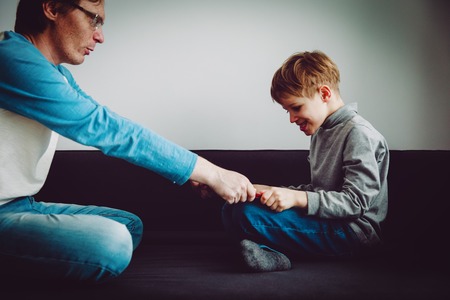Introduction to Play Therapy in British Paediatric Rehabilitation
Play therapy has long been recognised as a vital element within the UK’s approach to paediatric rehabilitation, particularly in supporting children following physical injury. Rooted in both psychological theory and practical application, play therapy leverages the natural way children express themselves—through play—to facilitate recovery and emotional wellbeing. Historically, British child healthcare has integrated play not only as a distraction from pain or discomfort, but as a therapeutic tool that empowers children to process trauma, regain confidence, and re-engage with their bodies after injury. This holistic perspective reflects a deep-seated value within British culture: the importance of childhood play as a cornerstone of healthy development. In communities across the UK, playgrounds, schoolyards, and local parks are seen as essential spaces where children learn resilience, social skills, and self-expression. By weaving play therapy into post-injury rehabilitation, British practitioners honour these cultural values while delivering evidence-based care that addresses both the physical and psychological needs of young patients.
2. Understanding the Psychological Impact of Injury on British Children
Injuries, whether sustained on the playground, during sports, or in everyday mishaps, can leave a significant mark on the psychological well-being of British children. Beyond physical recovery, these young individuals often grapple with emotional, social, and cognitive challenges that may be less visible yet deeply influential. Recognising these multifaceted impacts is essential for effective post-injury rehabilitation.
Emotional Challenges: Navigating Fear and Anxiety
British children, especially those who have enjoyed active lifestyles, may experience a profound sense of loss and vulnerability after an injury. Feelings of fear about re-injury, frustration due to limitations, and anxiety about returning to school or social groups are common. These emotions can manifest as withdrawal, irritability, or even regression in younger children.
Social Impact: The Struggle to Belong
The UK places a high value on inclusivity and social integration from an early age. However, injury-related absences can disrupt friendships and participation in group activities such as PE or after-school clubs. This social disconnect can lead to feelings of isolation or being left behind, particularly in cultures where team spirit and peer support are cherished components of childhood development.
Cognitive Setbacks: Disrupted Learning and Focus
Post-injury trauma can affect a child’s concentration and memory. Missing out on schoolwork or struggling to keep pace academically can further erode confidence. For many British families, academic achievement is closely linked to self-esteem and future prospects, amplifying the stress experienced by injured children.
Challenges Faced by British Children Post-Injury
| Type of Challenge | Description | Cultural Consideration (UK) |
|---|---|---|
| Emotional | Fear, anxiety, frustration | Stiff upper lip culture may discourage open discussion; play therapy offers a safe outlet |
| Social | Isolation from peers and group activities | Importance of inclusion; risk of feeling left out in school-based communities |
| Cognitive | Difficulties with focus and learning setbacks | Academic pressures emphasised in British education system |
The Role of Play Therapy within the British Cultural Context
Play therapy aligns well with the British approach to child development—valuing both individual expression and group belonging. Through structured play sessions, children have the opportunity to process difficult emotions non-verbally, rebuild confidence at their own pace, and reconnect with their peers in a supportive environment. Importantly, it respects the understated communication style often found in British families while providing an accessible route for emotional healing.

3. Core Principles of Play Therapy in the UK
In the context of post-injury rehabilitation for British children, play therapy operates under a set of well-established core principles that are deeply rooted in both theoretical understanding and professional practice. The approach is much more than simply allowing children to play; it is a structured, evidence-based intervention that draws on diverse psychological theories and adheres to stringent ethical guidelines.
Theoretical Approaches Guiding Play Therapy
British therapists commonly draw from several key theoretical frameworks when delivering play therapy. Non-directive (or child-centred) play therapy, influenced by the work of Virginia Axline and Carl Rogers, emphasises creating a safe and accepting environment where children can lead sessions at their own pace. Psychoanalytic and psychodynamic approaches, inspired by Melanie Klein and Anna Freud, focus on understanding unconscious processes expressed through play. In addition, cognitive-behavioural play therapy integrates structured activities to help children process trauma and develop coping strategies. These varied approaches allow therapists to tailor interventions to each child’s needs, especially crucial during the sensitive period following an injury.
Ethical Guidelines and Safeguarding
In the UK, ethical practice is paramount. Play therapists abide by robust ethical codes such as those set out by the British Association of Play Therapists (BAPT) or the British Association for Counselling and Psychotherapy (BACP). Confidentiality, consent, and safeguarding are cornerstones of these guidelines—therapists must always prioritise the child’s welfare, involving parents or guardians appropriately while respecting the child’s autonomy within safe boundaries. Regular supervision ensures accountability and ongoing professional reflection.
Professional Standards and Training
Practitioners in Britain undergo rigorous training that includes both academic study and extensive supervised practice. Accredited courses emphasise understanding developmental psychology, trauma-informed care, attachment theory, and cultural sensitivity. Continuing professional development (CPD) is not just encouraged but expected, ensuring therapists remain current with research and best practice standards. This commitment to excellence translates into high-quality support for children recovering from injuries.
Cultural Sensitivity in Practice
Play therapy in the UK recognises the importance of being culturally attuned. Therapists are trained to be sensitive to factors such as family background, language differences, and the unique challenges faced by British children navigating recovery within a multicultural society. This sensitivity helps foster trust and engagement, making therapeutic interventions more effective during rehabilitation.
In essence, the delivery of play therapy in post-injury rehabilitation for British children is guided by a blend of respected theoretical models, strict ethical codes, high professional standards, and cultural awareness—each playing an integral role in supporting young people’s emotional healing and resilience after physical trauma.
4. Practical Applications and Techniques
When it comes to post-injury rehabilitation for British children, play therapy offers a flexible and engaging approach that can be tailored to individual needs within both NHS and community settings. In practice, therapists draw upon a variety of creative and culturally-relevant play materials and activities designed to resonate with children’s everyday experiences in the UK.
Real-World Examples from NHS and Community Settings
The following table highlights some common play therapy interventions used across different settings, demonstrating the diversity and adaptability of techniques:
| Setting | Play Therapy Intervention | Culturally-Relevant Materials/Activities | Therapeutic Focus |
|---|---|---|---|
| NHS Paediatric Ward | Storytelling with British folk tales | Puppets, illustrated storybooks featuring local landmarks | Emotional expression, building resilience |
| Community Centre Group Sessions | Art-based therapy workshops | Use of familiar items (e.g. recycled household objects, football memorabilia) | Social skills, collaborative problem-solving |
| School Setting (Primary) | Dramatic role-play scenarios | Uniforms and props from popular British professions (police, NHS staff) | Confidence building, reintegration after absence |
| One-to-One Home Visits | Sensory play with UK-themed tactile kits | Kits containing sand from British beaches, scented markers reminiscent of local flora | Anxiety reduction, sensory re-integration post-injury |
Cultural Sensitivity in Play Therapy Materials
Therapists in the UK are mindful to select play materials that reflect the child’s cultural background and social context. For example, using toys and games commonly found in British homes—such as board games like “Snakes and Ladders” or miniature models of red double-decker buses—can help children feel more comfortable and understood during sessions.
Creative Techniques for Enhanced Engagement
- Nature walks: Incorporating local parks or gardens allows children to engage with their environment while promoting mobility in a relaxed setting.
- Music and movement: Using popular British nursery rhymes or pop songs encourages self-expression and physical rehabilitation.
- Mental health journaling: For older children, guided drawing or writing exercises themed around well-known British festivals or holidays can foster reflection and emotional processing.
Case Example: Football-Themed Rehabilitation Play Session
A young boy recovering from a leg injury was hesitant to participate in traditional physiotherapy. By introducing soft footballs, Premier League trading cards, and encouraging him to create his own “dream team” line-up through imaginative play, therapists helped him regain confidence in movement while staying connected to his passion for the sport—a quintessentially British pastime.
5. Multidisciplinary Collaboration within the British Healthcare System
One of the most distinctive features of post-injury rehabilitation for children in the UK is the seamless multidisciplinary collaboration that underpins the entire process. Play therapy, as a central pillar of this journey, brings together a diverse group of professionals and stakeholders all focused on supporting each child’s recovery and emotional wellbeing.
The Role of Therapists in Coordinated Care
Within the British healthcare system, play therapists often work hand-in-hand with occupational therapists, physiotherapists, psychologists, and paediatricians. Regular case conferences and integrated care plans ensure that every aspect of a child’s physical and emotional needs is addressed holistically. This teamwork enables therapists to tailor play-based interventions to suit both the clinical goals and individual personality of each child.
Family Involvement: A British Perspective
British families are encouraged to be active participants in their childs rehabilitation. Parents and carers receive guidance from NHS specialists on how to reinforce therapeutic activities at home using everyday objects and familiar routines. This partnership not only empowers families but also ensures consistency across different environments, which is vital for effective recovery through play therapy.
Schools as Key Partners in Rehabilitation
Schools across the UK play a pivotal role in supporting children returning from injury. SENCOs (Special Educational Needs Coordinators), teaching assistants, and school nurses collaborate closely with medical teams to adapt learning environments and integrate playful therapeutic techniques into daily school life. These adjustments might include modified PE lessons or dedicated quiet spaces where children can engage in therapeutic play during breaks.
NHS Professionals: The Backbone of Support
The NHS provides a coordinated framework where GPs, hospital consultants, community nurses, and allied health professionals communicate regularly to track progress and adjust care plans as needed. This joined-up approach ensures that no aspect of the child’s rehabilitation is overlooked, and that play therapy remains an evolving part of their overall treatment strategy.
A Culture of Open Communication
Perhaps most importantly, the British healthcare ethos places strong emphasis on open communication between all parties involved. Multi-agency meetings, written reports shared with parents and schools, and clear referral pathways are standard practice. This transparency helps build trust and keeps everyone focused on what matters most: enabling each child to recover not just physically, but emotionally, through the power of play.
6. Measuring Outcomes and Success in a British Context
Evaluating the effectiveness of play therapy in post-injury rehabilitation for children is a crucial step in ensuring that interventions are both meaningful and evidence-based. In the UK, a combination of standardised tools and qualitative methodologies is employed to assess progress, adapting to the unique cultural context and needs of British children and families.
Tools and Methodologies Used in the UK
Practitioners commonly utilise assessment frameworks such as the Strengths and Difficulties Questionnaire (SDQ) and the Child Outcome Rating Scale (CORS), which provide structured insights into emotional wellbeing, resilience, and social adjustment. Additionally, the Play Therapy Outcomes Evaluation (PTOE) tool, developed specifically for UK settings, offers practitioners a tailored approach to track behavioural changes and engagement levels over time. These quantitative measures are often complemented by regular observational notes, feedback from parents, and direct input from children when appropriate. Multi-disciplinary team reviews further ensure that every aspect of a child’s recovery is considered holistically.
Success Stories from British Rehabilitation Settings
Anecdotal evidence gathered from NHS hospitals and local authority services highlights numerous cases where play therapy has accelerated recovery. One memorable example involves an eight-year-old from Manchester who, after sustaining a significant leg injury, exhibited signs of withdrawal and anxiety. Through weekly play therapy sessions using art materials and storytelling—familiar formats within UK culture—he gradually regained confidence not only in physical activities but also in social interactions at school.
Lessons Learned Along the Way
Reflecting on these successes, it is clear that outcome measurement is most effective when it values both statistical data and personal narratives. British therapists emphasise the importance of capturing each child’s voice and lived experience, recognising that healing is not just about physical milestones but also emotional resilience. The shared learning underscores the need for adaptable evaluation tools that reflect the diversity of British childhoods while prioritising family involvement at every stage of rehabilitation.
7. Conclusion: The Future of Play Therapy in British Paediatric Rehabilitation
Reflecting on the progress made so far, it is clear that play therapy is steadily carving out its place within the landscape of paediatric rehabilitation across the UK. Ongoing research continues to highlight the positive outcomes for children post-injury, with studies demonstrating improvements in emotional wellbeing, engagement, and even physical recovery when play-based interventions are integrated into care plans.
The NHS has already begun to recognise the value of this approach. Various pilot schemes and NHS Trust initiatives across England, Scotland, Wales, and Northern Ireland are embedding trained play therapists into multidisciplinary teams. This collaborative approach not only enhances clinical effectiveness but also brings a holistic, child-centred ethos to paediatric rehabilitation settings.
Looking ahead, there is real momentum behind advocating for wider access and consistent standards in play therapy services. Increased investment in training programmes for both play therapists and allied health professionals will be key. Furthermore, fostering stronger partnerships between hospitals, community settings, and local authorities can ensure that every child—regardless of postcode—benefits from innovative, evidence-based play interventions as part of their recovery journey.
Ultimately, integrating play therapy further into mainstream paediatric care aligns perfectly with British values of compassion, inclusivity, and forward-thinking healthcare. As research deepens and successful case studies continue to inspire change-makers within the NHS, there is every reason to be optimistic about a future where play therapy is not just an add-on but a core component of paediatric rehabilitation throughout the UK.


